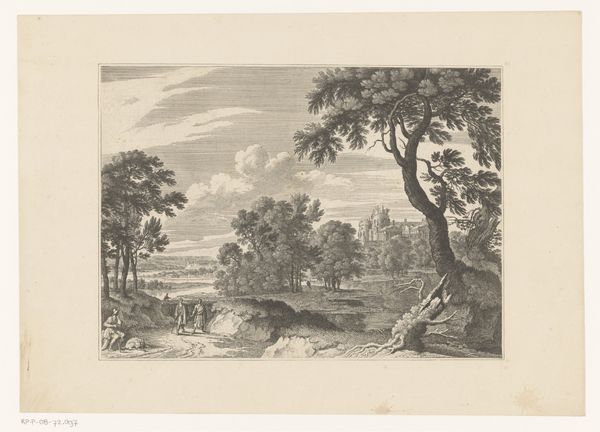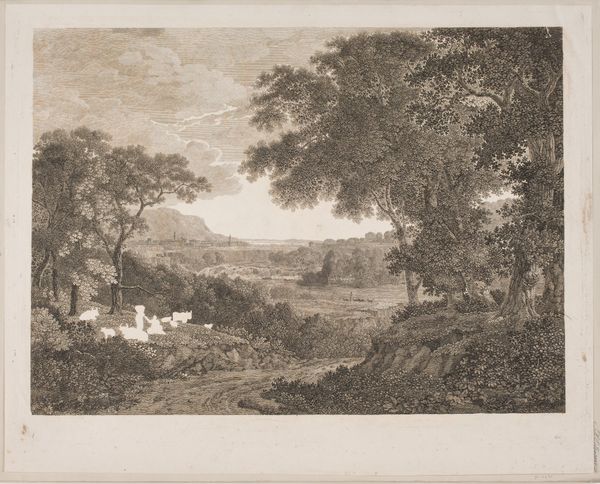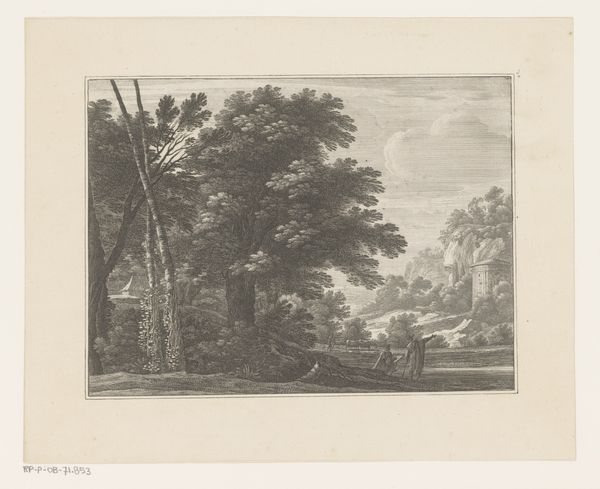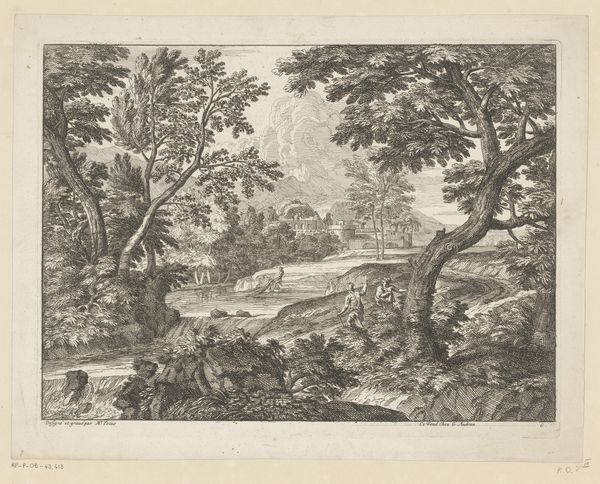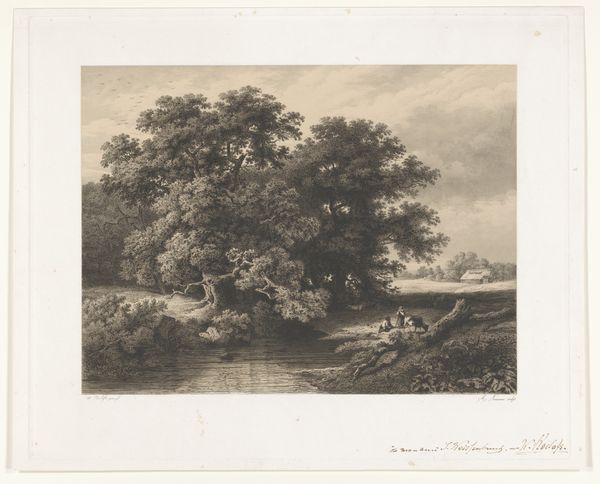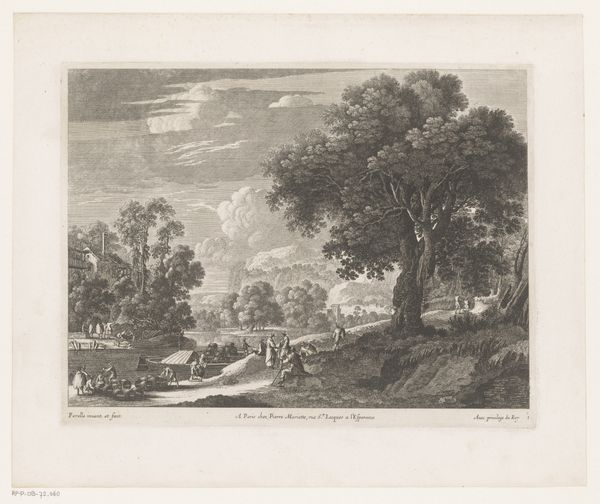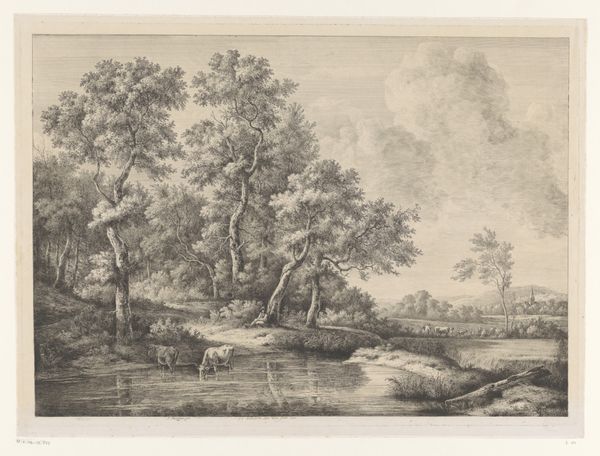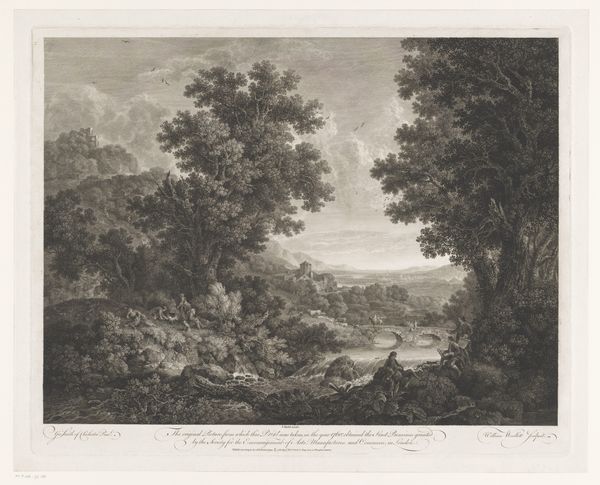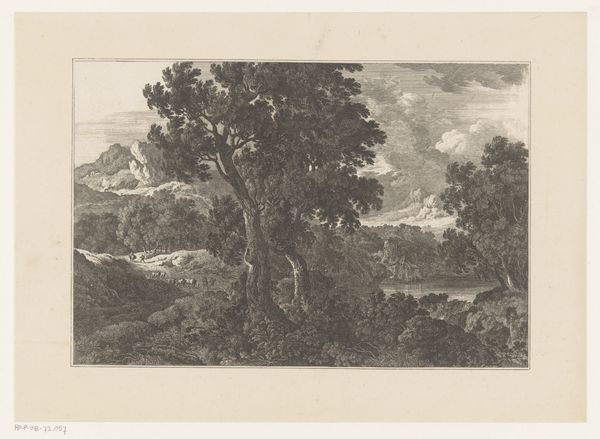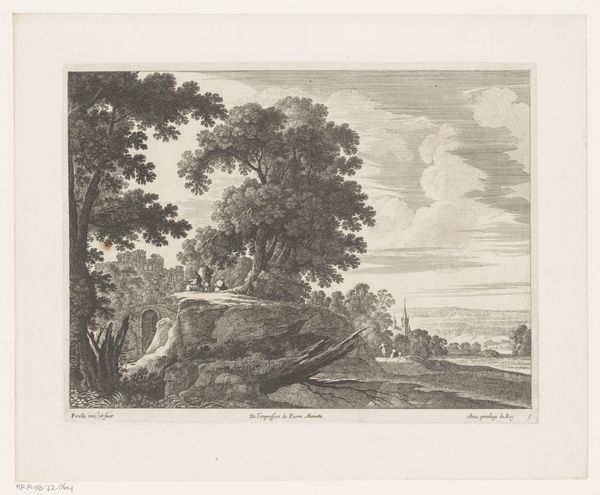
Dimensions: height 447 mm, width 540 mm
Copyright: Rijks Museum: Open Domain
Curator: Let's talk about this landscape titled "Landschap met dieren en figuren op een weg langs een rivier," or "Landscape with animals and figures on a road along a river". It’s an engraving, dating roughly from 1833 to 1880, by Auguste Numans. Editor: My first impression is a sort of quiet melancholy. It's detailed, of course, with the delicate engraving technique, but there's something about the gray tones and the solitary figures that creates a pensive mood. Curator: I see that melancholy. Considering the socio-political climate, these depictions of the pastoral were often intertwined with national identity and a longing for simpler times, frequently idealized in the face of industrialization and urbanization. How do you feel the representation of labour manifests within the imagery? Editor: Good point. I immediately think of gender and labour, actually. The figures seem largely masculine – are there women visible anywhere? How does their apparent absence influence our reading of labour and landscape? I am always fascinated to investigate historical power dynamics inherent to how environments are used, valued, and, indeed, depicted. Curator: Absolutely. Think about the way the rising middle class at that time consumed images. Landscapes such as this weren't just about aesthetic pleasure. These pieces acted as demonstrations of cultural capital. Owning such work reinforced their status and projected their refined taste. I also want to point out the role that galleries played during that era to see the painting become a cultural artifact of the time. Editor: Precisely. The placement of these images shaped not only personal taste, but also collective historical memory. Now I'm really wondering, which social groups have traditionally lacked access to this picturesque scene that are now encouraged to appreciate? Curator: I agree with your assessment about how museums play a key part. Ultimately, this Numans engraving reveals layers of 19th-century Dutch society that extends far beyond its picturesque qualities. Editor: It also inspires further thought and discussion, a hallmark of compelling artwork that crosses time.
Comments
No comments
Be the first to comment and join the conversation on the ultimate creative platform.

